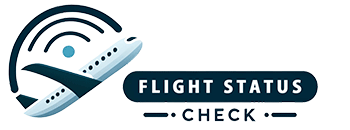Getting ready for a journey is always an exciting experience. Whether it’s for business or pleasure, the anticipation of reaching new destinations and meeting new people is something that never gets old. However, one of the most nerve-wracking aspects of air travel is not knowing the status of your flight. No one wants to be left stranded at the airport or miss an important meeting because of a delayed or cancelled flight. That’s why staying updated on your flight’s status is crucial.
Fortunately, in this technological age, there are several ways to stay informed about your flight’s status. From online flight tracking tools to mobile apps, passengers now have access to real-time information about their flights. In this article, we’ll explore the importance of tracking flight status, the different methods available, and some interesting facts about flight tracking.
Why is it Important to Track Flight Status?
There are several reasons why tracking flight status is important. Firstly, it helps passengers plan their journeys more effectively. By knowing the exact time of departure and arrival, passengers can plan their travel to and from the airport accordingly. This can help avoid long waiting times at the airport or rushing to catch a connecting flight.
Moreover, tracking flight status can also help passengers anticipate any potential delays or cancellations. This is especially useful during adverse weather conditions or other unforeseen circumstances. By staying informed about any changes to the flight schedule, passengers can make alternative arrangements and avoid unnecessary stress and inconvenience.
Additionally, tracking flight status is important for those who are picking up or dropping off passengers at the airport. By knowing the exact arrival time, friends and family members can ensure that they are present at the airport on time to greet their loved ones.
Methods for Tracking Flight Status
There are several methods available for tracking flight status, each with its own benefits and limitations. Some of the most popular methods include:
1. Online Flight Tracking Tools: There are several websites that offer real-time flight tracking services. These websites allow users to enter their flight details and receive up-to-date information about their flight’s status. Some of these websites also offer additional features such as live flight maps, weather updates, and airport information.
2. Mobile Apps: Many airlines have their own mobile apps that provide information about flight status. These apps often allow passengers to check in, view their boarding pass, and receive updates about any changes to their flight schedule. In addition to airline-specific apps, there are also third-party flight tracking apps that offer similar services.
3. Airport Information Screens: Most airports have information screens that display the departure and arrival times of flights. These screens are located in various areas of the airport, including the check-in counters, departure gates, and baggage claim area.
4. Airline Customer Service: For those who prefer more personal assistance, contacting the airline’s customer service department can also provide information about flight status. Customer service representatives can inform passengers about any changes to their flight schedule and assist with rebooking or making alternative arrangements.
Interesting Facts about Flight Tracking
Tracking the status of flights is not only practical but also a fascinating topic. Here are some interesting facts about flight tracking that you might not know:
1. The concept of flight tracking dates back to the early 20th century when air traffic control was first introduced. Since then, technology has significantly advanced, allowing for more accurate and efficient flight tracking.
2. The most widely used system for tracking flights is the Automatic Dependent Surveillance-Broadcast (ADS-B). This system uses GPS technology to track aircraft positions and provide real-time data to air traffic control and other users.
3. Flight tracking has become increasingly popular among aviation enthusiasts and plane spotters. Many of these enthusiasts use flight tracking websites and apps to monitor the movements of specific aircraft and track their flight paths.
4. In addition to tracking commercial flights, flight tracking technology is also used for military and private aircraft. This technology helps ensure the safety and security of all types of aircraft in the airspace.
5. With the advancement of technology, some flight tracking services now offer 3D flight views, allowing users to see the exact position and altitude of a specific aircraft in real-time.
Conclusion
In conclusion, tracking flight status is an essential part of air travel. It not only helps passengers plan their journeys more effectively but also provides peace of mind and reassurance. With the availability of various tracking methods, passengers can easily stay informed about any changes to their flight schedule. Whether it’s through online tools, mobile apps, airport information screens, or airline customer service, tracking flight status has never been easier.
Moreover, flight tracking technology has come a long way since its inception, offering users more accurate and detailed information about aircraft positions and flight paths. Whether it’s for practical reasons or simply for the joy of watching planes in the sky, flight tracking has become an integral part of the travel experience. So, next time you’re getting ready to embark on a journey, make sure to stay informed about the status of your flight and enjoy the peace of mind that comes with it. Safe travels!

Leave a Reply